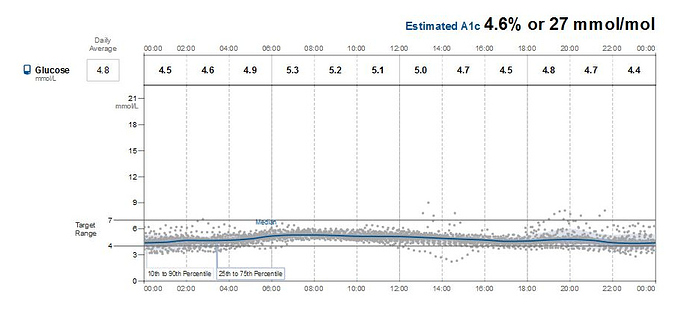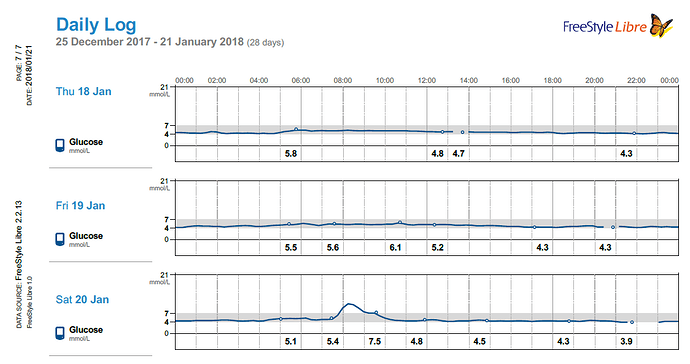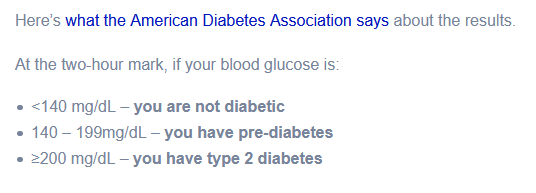A technical question, as there are so many helpful knowledgable people here 
(1) Is a fasting glucose of 110-120 normal for someone on a ketogenic diet, after a 14h fast? I know about the dawn effect, but this is in the middle of the day and looks a bit on the high side to me. What normal range would you expect (for someone still losing weight)?
(2) Is there a variant of the Kraft test using only glucose measurements? The test is unknown over here in Germany, and fairly expensive because it requires several insulin measurements. As I’m trying to advise a few people who might be insulin resistant or not (talking about potential TOFIs) I wondered if something could be done with a glass of sugary water and a device to monitor blood glucose…
Background:
I never measured blood glucose, because I transitioned from ignorant (undiagnosed prediabetic with a 5.7 HbA1C) to low-carb and later ketogenic (5.0 HbA1C, HOMA-IR still at 1.7). So after a year of low-carb/keto I’m still insulin resistant.
However, I tried to transition to Carnivore and found that I got hungry and had to eat twice a day (compared to once a day with moderate-protein keto), so I wonder if I belong to the people who kickstart their glycogenesis with protein. (I know Dr. Bikmans talk that there is little insulin response to protein on keto diet, but there are case reports on diabetic patients reacting different, and I was wondering if I belong to this group.)
Anyway, I finally got a cheap device to measure blood glucose, and naturally wonder where I could learn more about expected glucose levels. (I’d prefer to monitor insulin, but I don’t know any cost-efficient way unfortunately.)




